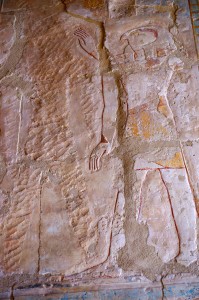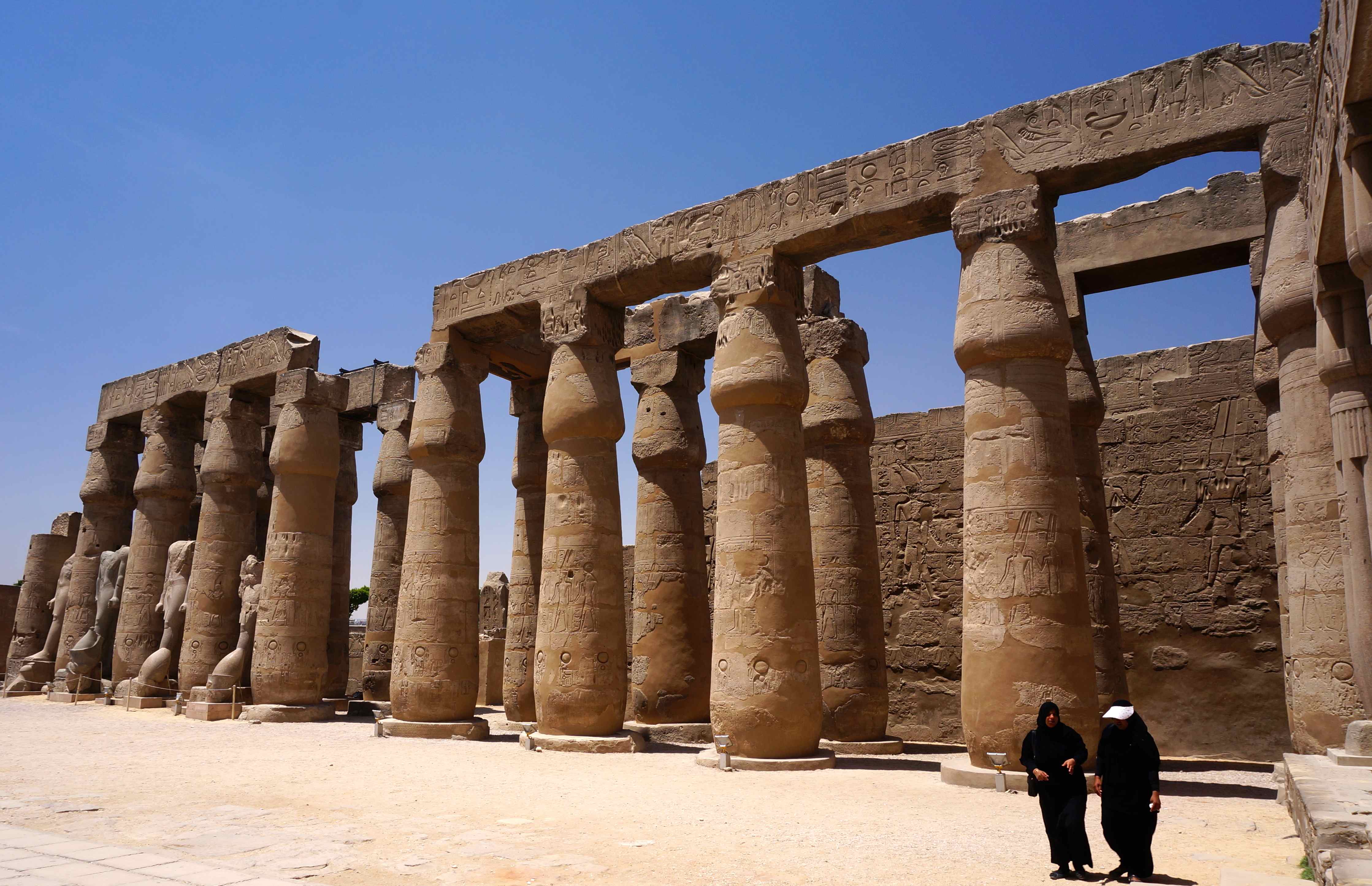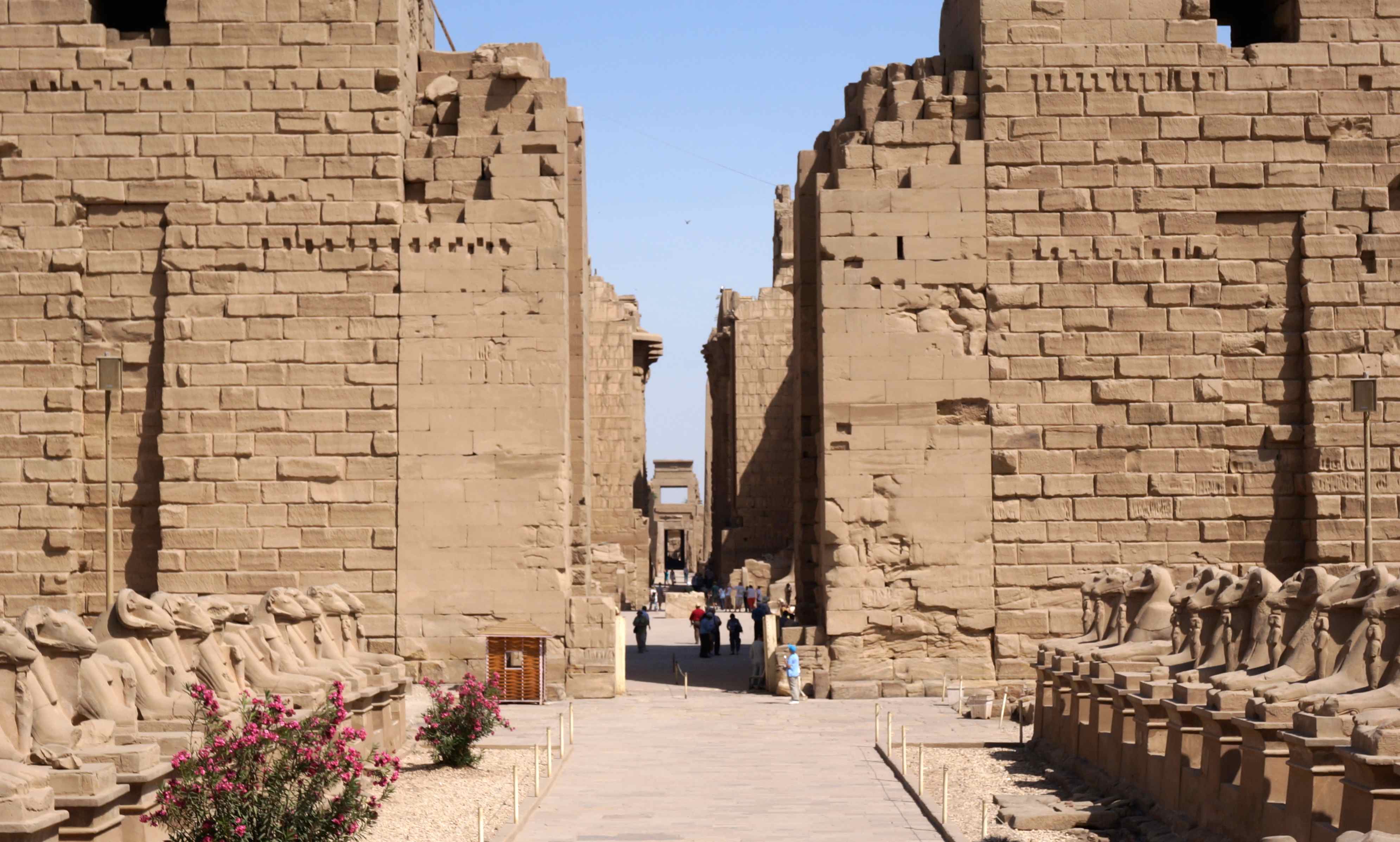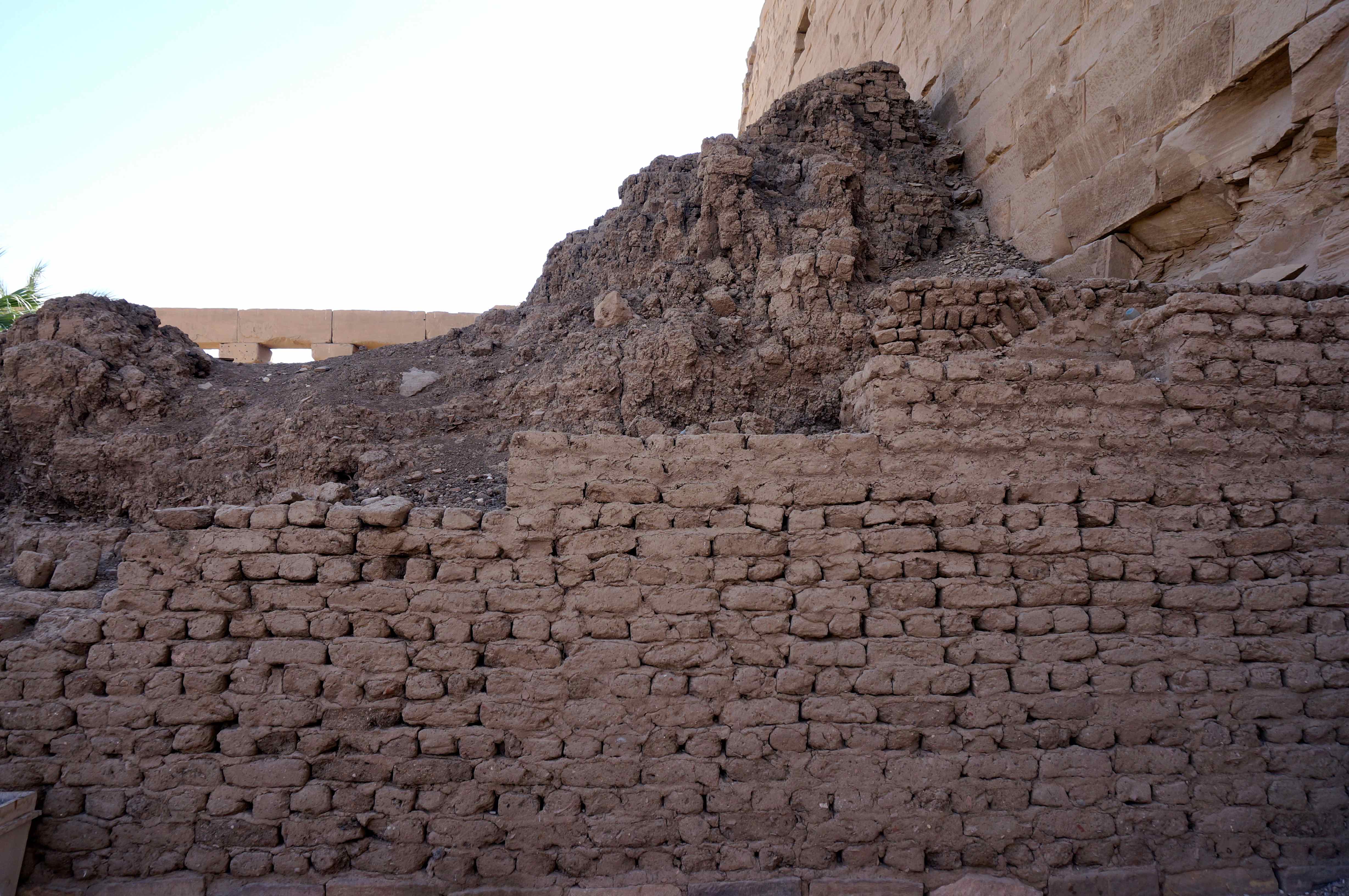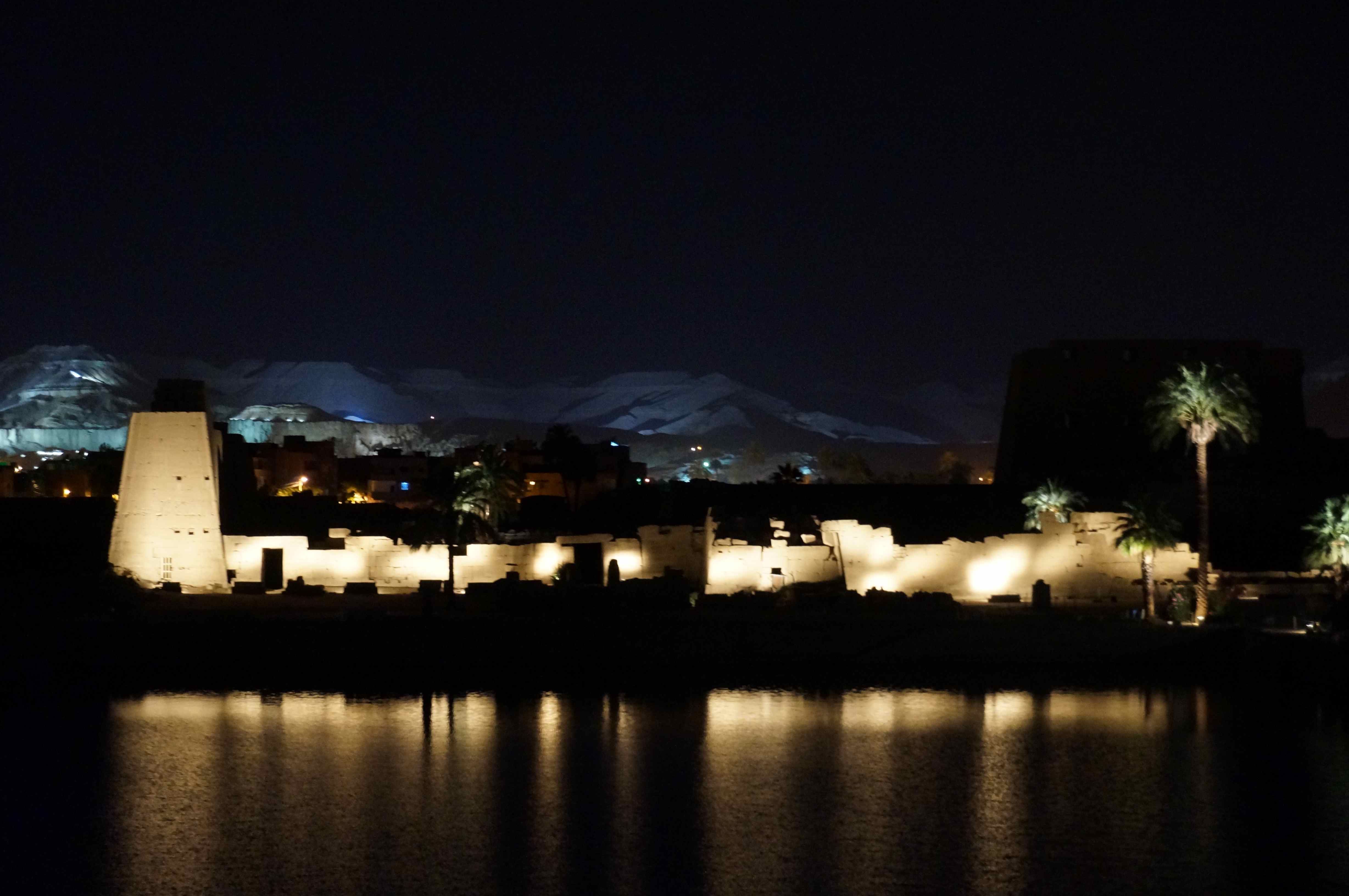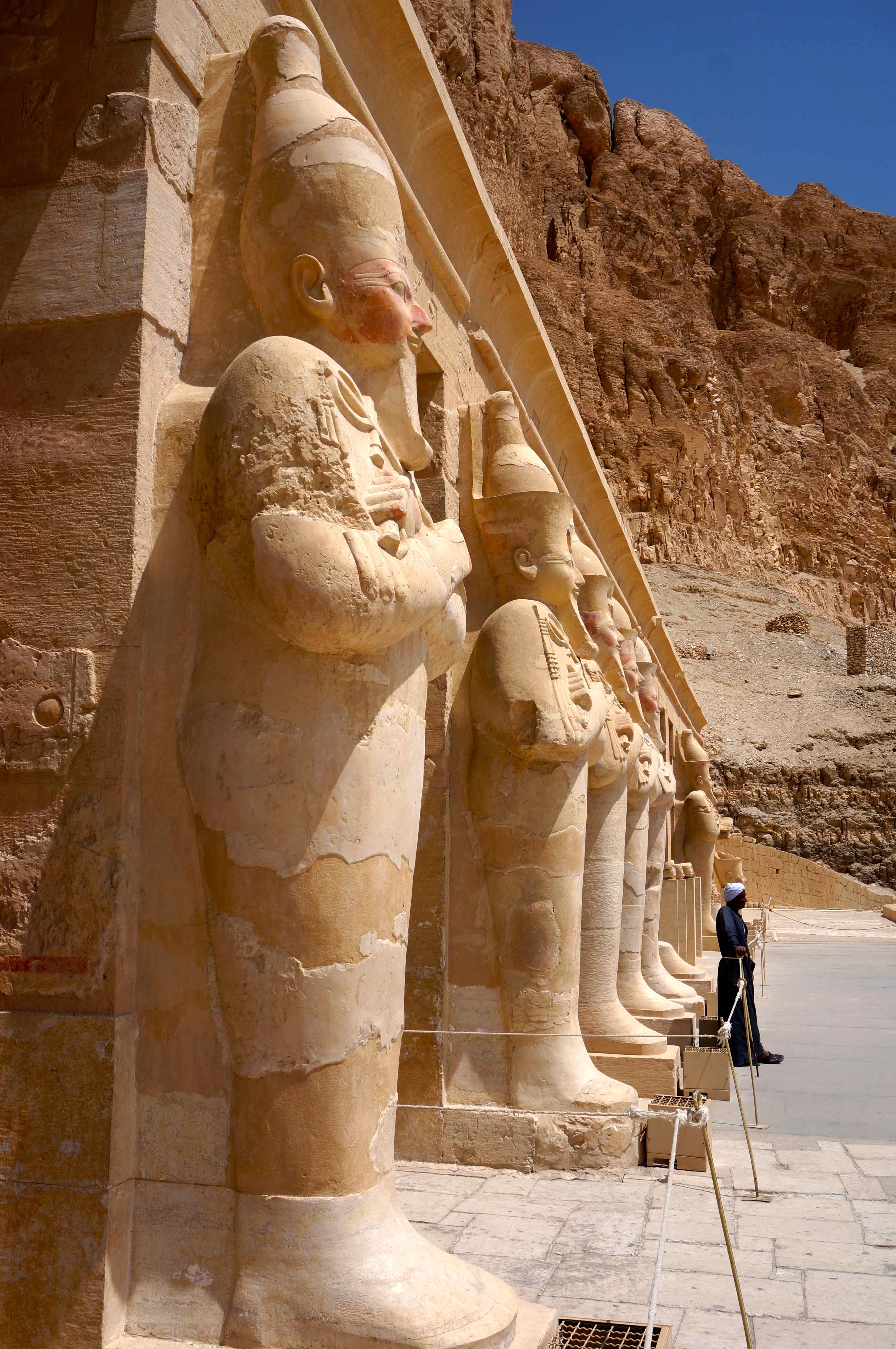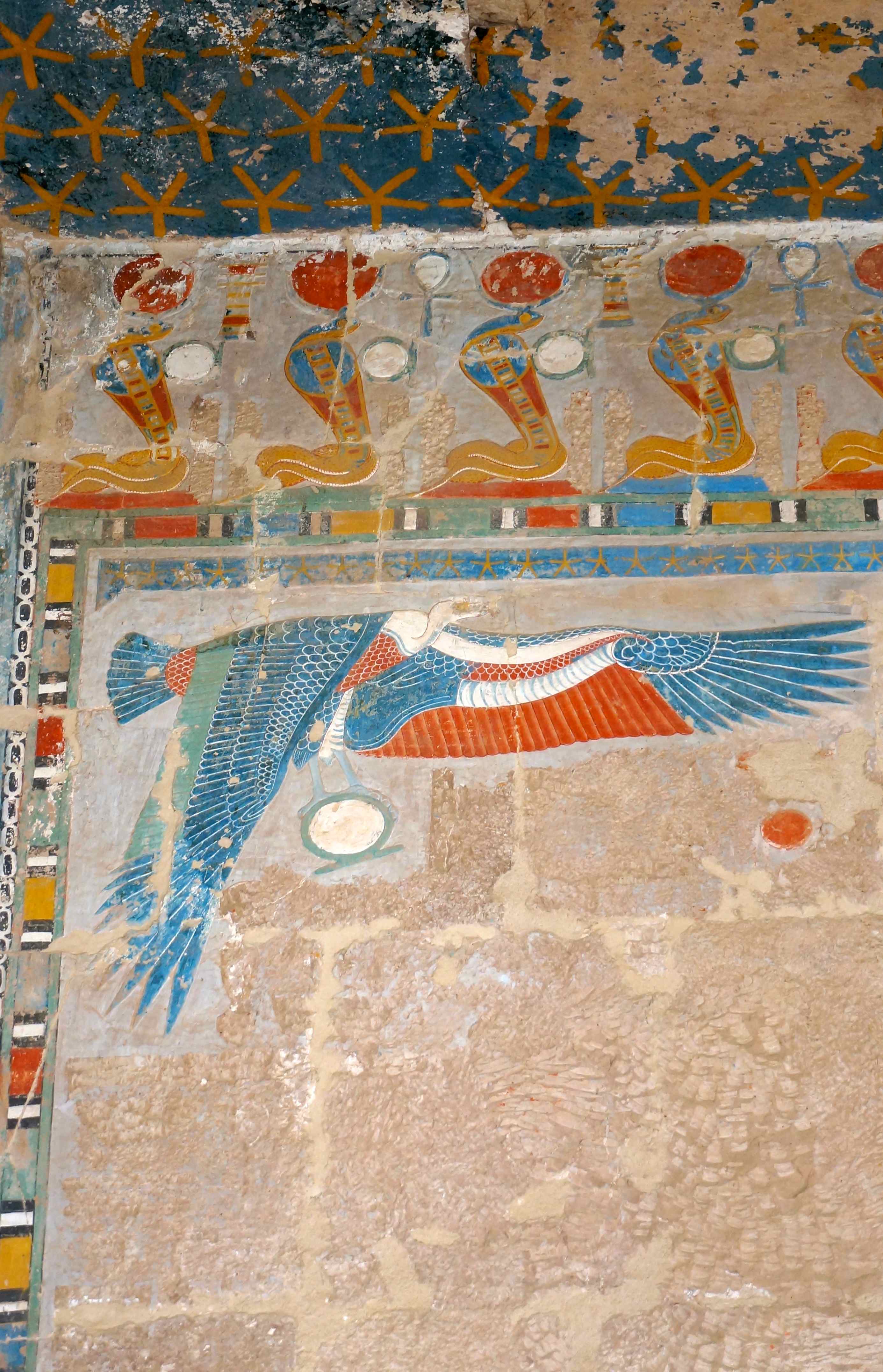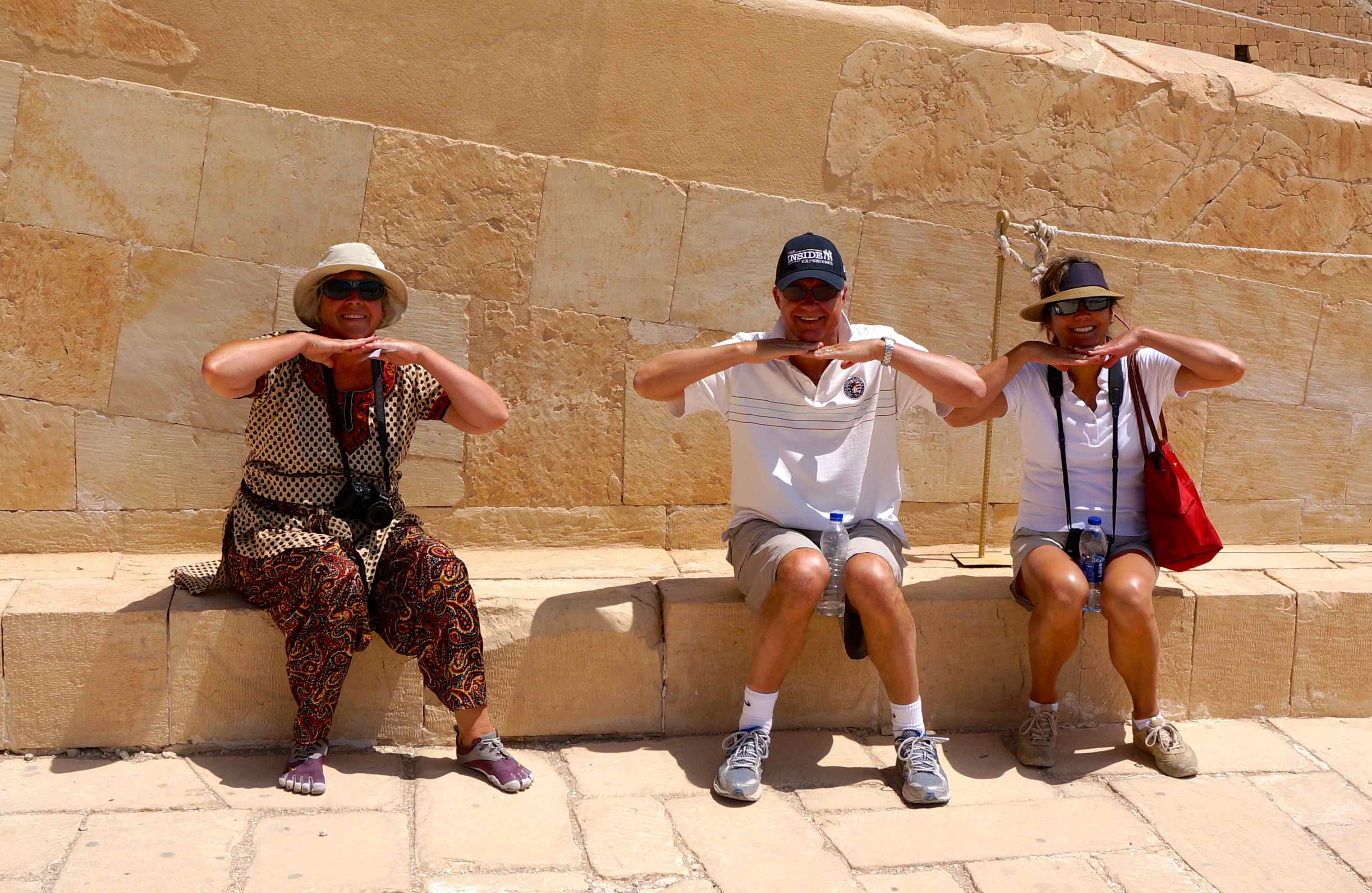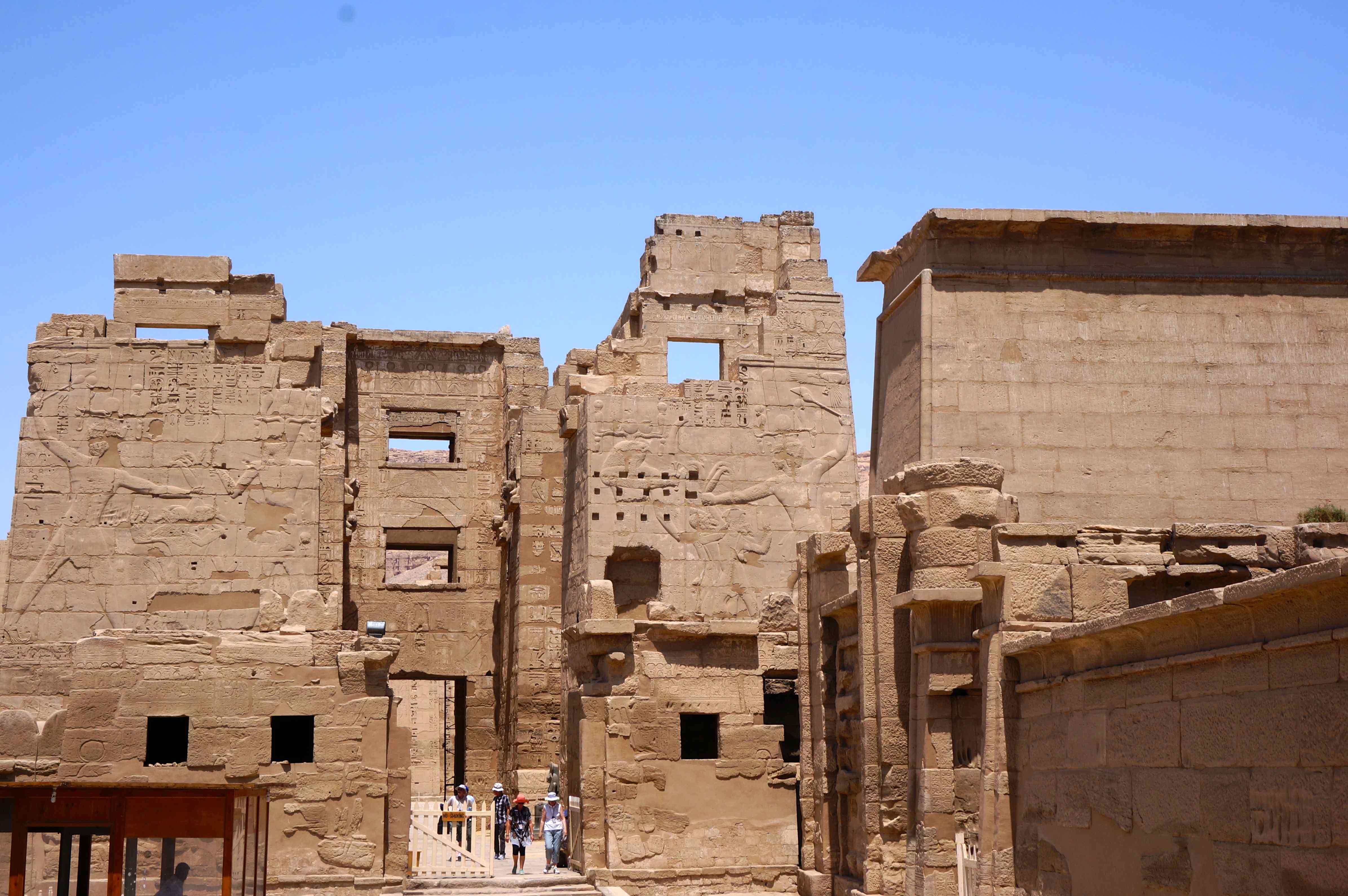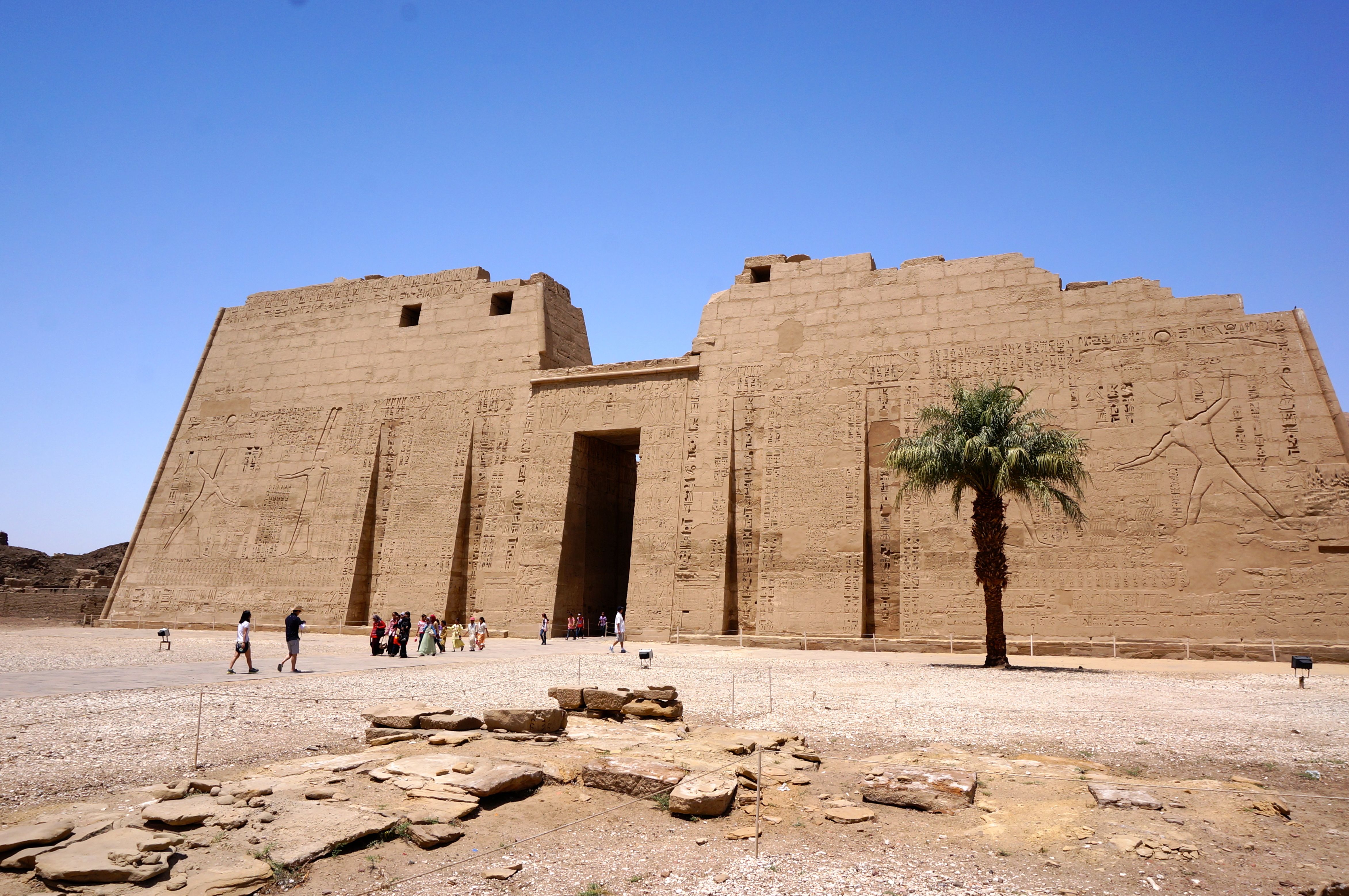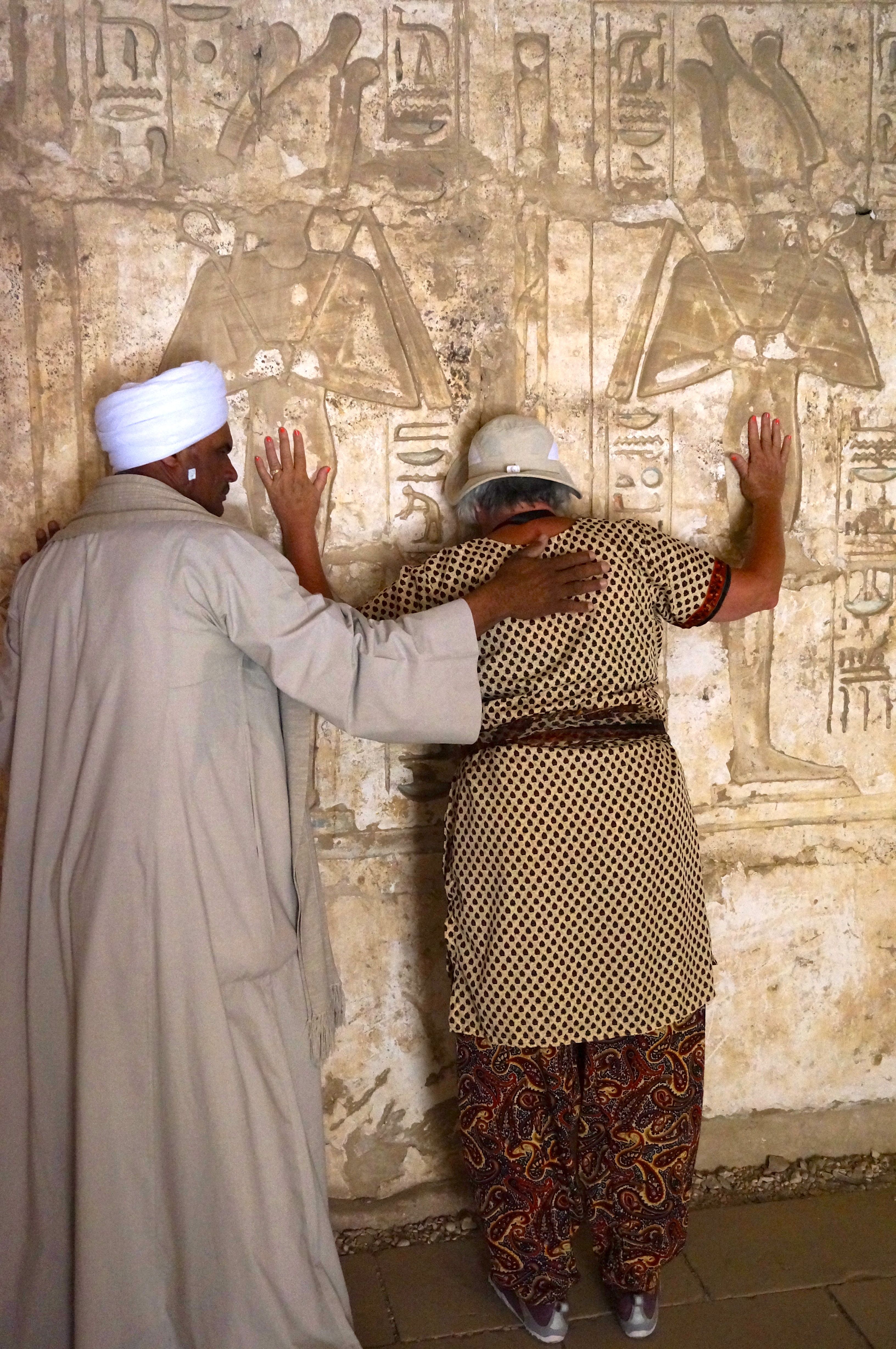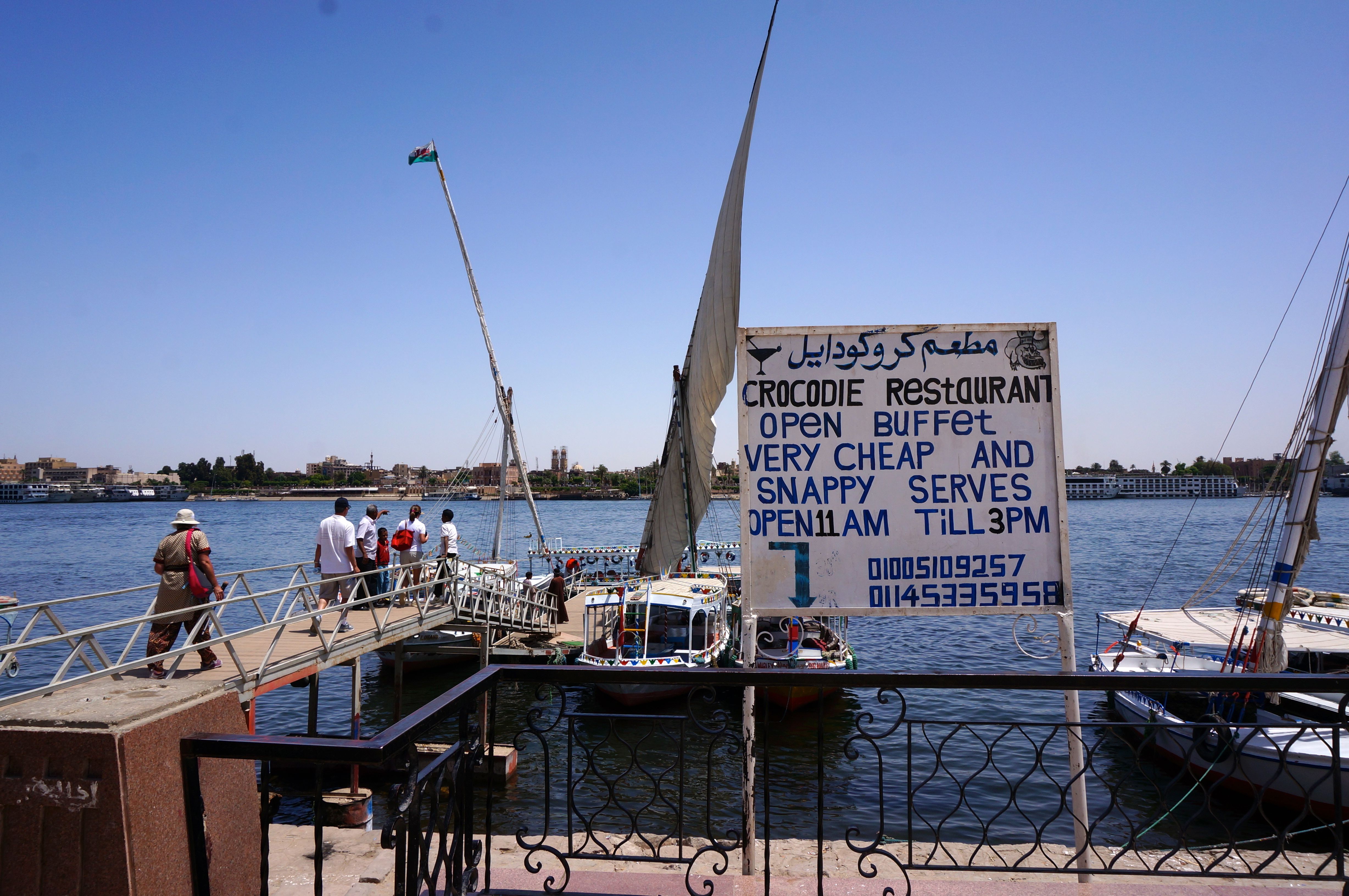After leaving Oman, we spent 4 days transiting to our first stop in Egypt (Safaga), including a couple of days on the Red Sea. While most of the trip was uneventful, we did have on run-in with Somali pirates. We had earlier boarded (at sea) a private security force and their “hardware.” Their first order of business was to string concertina wire around portions of the deck and then set up a watch rotation. Sure enough — a “freighter” (actually the pirate mothership) came relatively close to us and dumped off a large number of motorboats who buzzed us, testing our defenses. I guess they didn’t like the looks of the security force and ultimately waved off. Exciting! So back to the “Red” Sea — how did it get its name? Theories abound (the color of the local coral, the periodic algal bloom, the color of the surrounding mountains, and (the strangest) that it was really the Reed Sea for the reeds that grow along the banks) and people point to various translations, but nobody knows for sure. As I noted in my last post, our port stops had little to do with where we were going and, in the case of Luxor, we faced a 3.5-hour bus ride through the desert.
The first thing that became obvious was the number of security checkpoints along the way. Most often, these posts were jointly manned by the police and the Egyptian Army. The Army was called in to assist in all these checkpoints after the police were publically embarrassed by some public brutality they were caught doing. That, and the fact that the Army is pretty much involved in everything these days. Anyway, Luxor is a little town on the Nile. Luxor is in Upper Egypt, which is in the southern part of the country. Huh? Run that by me again! Yes, it’s true. The reason is that the Nile actually flows from south-to-north, ending in the Mediterranean Sea. By the way, a few tidbits about the Nile: (1) it is the longest river in the world, (2) it runs through eleven countries in Africa, and (3) if not for the Nile, Egypt would not exist (95% of Egypt’s population are along its banks). There is one more fact about the Nile that is relevant to the discussion of touring ancient Egypt – the east side of the river always held the temples, etc. for the living and the west side always held the temples and tombs of the dead (called the Necropolis).
Deb would do a much better job of describing all of the sites that we visited and their historical significance (and you should feel free to ask her). Since I am writing this blog, I will give you some impressions and a few examples. The first observation relates to the temples/structures and history. These sites first saw building in the 3rd Millennium BC and continued “redevelopment” at least through the time of the Romans in the 1st or 2nd century AD (in other words, for thousands of years). By “redevelopment” I mean that they pilfered and/or added on to what had previously existed. While we often think of grave robbers as the bad guys we saw in the movies, often it was one of the next pharaohs who did the pilfering. Why, you might ask? Generally, this occurred for one of two reasons – jealousy (i.e., erasing any evidence that you existed and covering your hieroglyphics with theirs) and poverty (as I mentioned, Egypt went through three very bad downturns and the gold in your temple/tomb could get me through the tough times). As a consequence, the ruins tend to be a mish-mash of things from a variety of pharaohs (or their conquerors).
What is clear is that they pulled off some engineering marvels to excavate and transport massive pieces of stone, carve them, and then assemble them in structures that could easily be 80 feet or so (much higher than that if you consider the pyramids). Beyond that, what you hear about the pharaohs would sound very familiar to us today – great deeds and petty jealousies, peace loving but frequently at war, and lots of “juicy” gossip and intrigue.
Our first stop was the Temple of Luxor and then on to the Temple at Karnak. Both were quite grand and in amazing shape given their ages. What was a little odd was that our preconceived notion was that these structures would be somewhere out in the country. Rather, they are in (and sometimes under) the city. Consequently, getting to the structures is pretty easy. We ended up spending the night at a lovely hotel on the Nile and Glen went to the evening “sound and light show” in the Karnak temple. Both the temple and the surrounding hills were illuminated and the story was interesting.
The next day, we crossed the Nile to the Necropolis to see all the tomb sites and mortuary temples. The Valley of the Kings was truly amazing. After the pyramids of Cairo were so totally looted, many of the pharaohs decide a more secluded location might keep their tombs from being looted. In fact, the Valley of the Kings was in the mountains with only one-way in and out. Over 60 tombs and chambers were dug deep into the hillsides over a 500-year period. Unfortunately, a lot of grave robbing found its way here as well, leaving few artifacts, but some amazing wall decorations (you won’t see any pictures – photography is verboten!). One of the few exceptions was the tomb of King Tut. His tomb was largely untouched and most of his burial things were intact. Why is that you might ask yourself. Good question! It turns out that it was a bit of luck. King Tut, who really was a minor pharaoh, died unexpectedly from infection associated with a leg wound, fairly early in his reign. Consequently, they didn’t have a tomb ready for him and had to borrow a very small tomb that went largely unnoticed. In fact, the robbers were piling the dirt they were excavating from another grave on top of Tut’s. While it appears that someone may have broken into part of the tomb, they never really got inside. Not all of the tombs are open all the time and we were only allowed to select 3 (not counting King Tut’s) to visit (they are trying to manage the traffic (and accompanying moisture and carbon dioxide) down to keep the interiors from further deterioration. From the Valley of the Kings, we visited a variety of other mortuary temples including that of Hatshepsut (the only female king) and Rameses II (the biggest of the temples that celebrated his military victories, frequently showing him clubbing prisoners to death or counting severed hands – which was the way they kept track of the number of the vanquished).
All in all, a great trip. While not chronologically in order, I will next talk about Cairo – a much less wonderful stop…
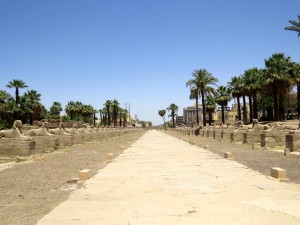
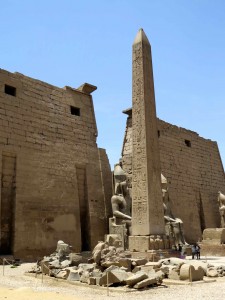
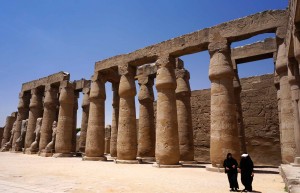
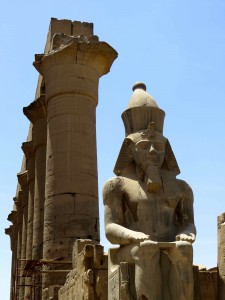
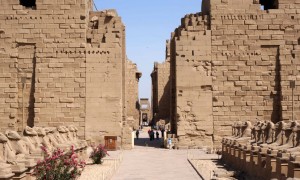
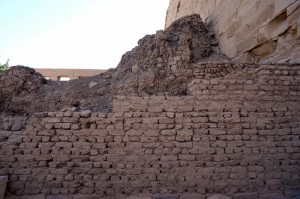
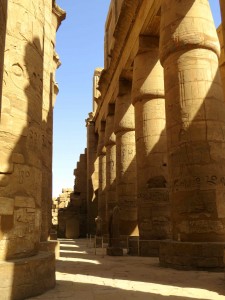
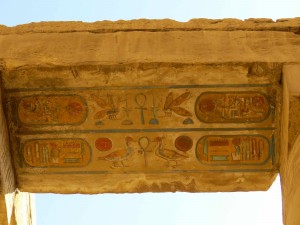
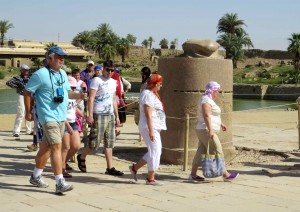
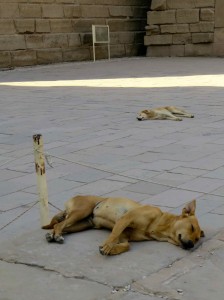
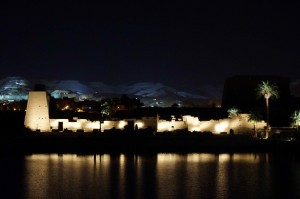
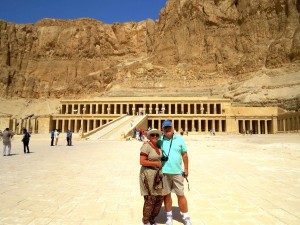 Deb and Glen at the entrance of Hatshepsut’s mortuary temple. She was the only female pharaoh — which you might imagine didn’t go down very well!
Deb and Glen at the entrance of Hatshepsut’s mortuary temple. She was the only female pharaoh — which you might imagine didn’t go down very well!
One of example of this is that one of the later pharaohs nearly totally scratched out all images of her and used her temple for himself!
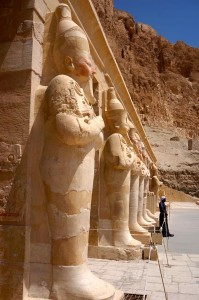
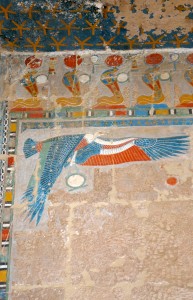
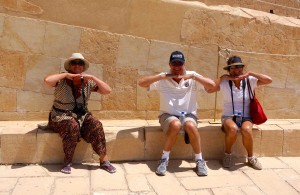
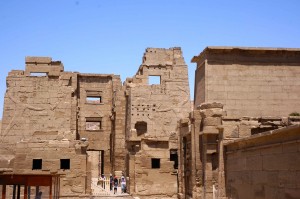
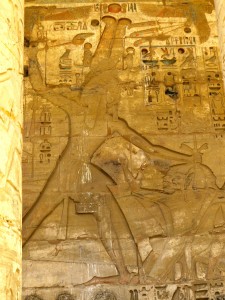
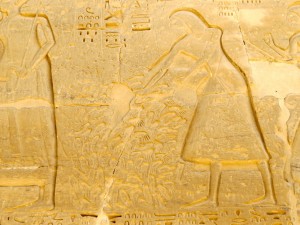
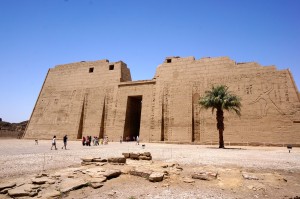
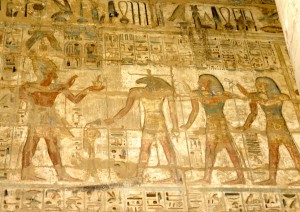
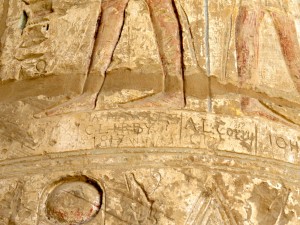
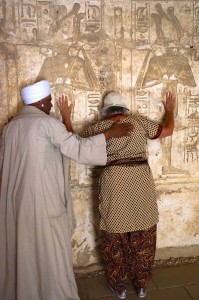
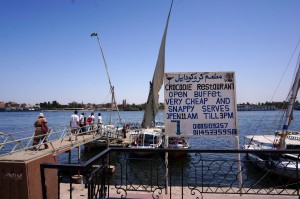
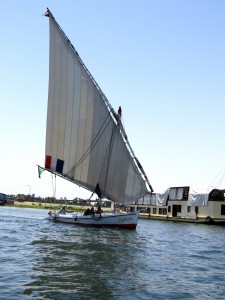
This entry was posted in Cruising, Egypt, Travel
